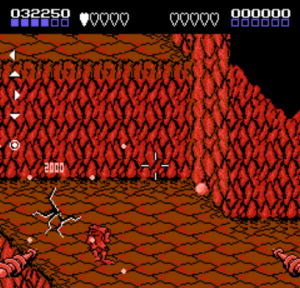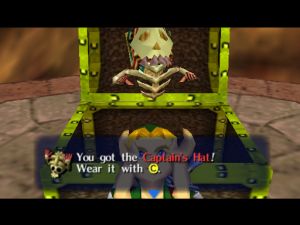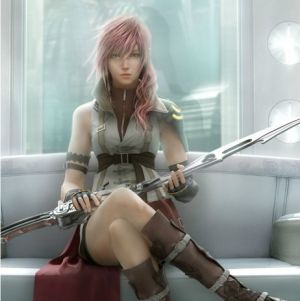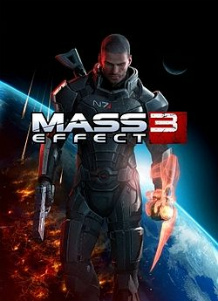Games
Mass Effect and Video Game Narration
By Zak Edwards
April 5, 2012 - 20:39
Ever since its release, the internet has been on fire about Mass Effect 3 and its disappointing ending, to the point that Bioware has announced a free DLC to satisfy fans. I cannot speak to the ending in terms of plot or character familiarity, I only played the first Mass Effect for about twenty minutes before realizing the character I had painstakingly created had, as my roommate at the time put it, “Julia Roberts mouth” and turned it off, but I would like to talk more generally about Mass Effect 3, perspective, and video game narratives. Hopefully, we can figure why games are so interesting while looking at how the stories are told.
 |
Games have quite appropriately taken the narrative perspectives to discuss how cameras work, talking about first and third person perspectives. In Halo, a famous series of first person shooters, players look at the world through the eyes of the character they are playing. Others, like Final Fantasy XIII, has a camera follow the character around in a third person perspective. These terms make sense for the camera, but don’t necessarily reflect narrative perspectives. After all, most of the time, the camera isn’t even recognized as a character, a sort of limited omniscient third person, but I want to argue that most video games are not first or third person, but are instead the rarely used second person perspective.
Second person perspective is a narrative viewpoint that speaks directly to the audience using words like “you” and “we” to dictate to the audience what they are doing. Video games have been using this since the days of text-based computer games, in which a player would type in actions and the computer would tell them the result. For example, the player could type in “Use Key” and the computer would tell you “You have unlocked the door.” The perspective makes sense, the character players control is a sort of avatar, not necessarily blue, but certainly a stand-in for the actual player. Battletoads for the NES has a early boss battle that uses a second-person narration where the player sees through the eyes of the boss as the characters attack it.. Games continue to do this, players can often choose the names of their characters and certainly every time Link opens a chest, the game’s informer (possibly narrator) tells you that “You have received <blank>.” Not to mention players are directly controlling game protagonists, further occupying the second-person role; a player tells a character to move and the game allows as such in an immediate audio-visual response. Games, therefore, seem to frequently use some form of second-person narrative simply because they involve a person acting on the screen as the visual and audio sends messages about what you are doing. The major difference is how this technique is used.
 |
In literature, the second-person perspective is easily the least used and, as such, holds a stronger significance in its rare appearances. Joshua Ferris employs a plural second-person narration for much of his book “Then We Came to the End,” using words like “we” and “us” to comment on corporate language use. The second-person implies a sort of collective assumed thought, one that the characters are supposed to think like. It also makes the reader every character and no character simultaneously, displacing the reader into a paradox of existence, being told what they are doing without possessing a concrete, single identity. Joyce Carol Oates’ novel “Rape: A Love Story” uses the second person perspective more intensely, narrating a daughter who watches her mother being gang-raped. The technique strongly conveys a lack of control and an inability to act, pushing the trauma of the event onto the reader much more forcibly. As the reader is told this is what they personally experienced, the control is completely lost and readers can be left felling helpless. In both instances, the second-person narrative conveys a lack of will or an inability to act.
Video games, by contrast, are constantly giving the audience control. Characters can run around, fight enemies, pause the game, etc, and, as sandbox gaming becomes more popular, games are adopting a more open feel. With this feel approach, the second-person narrative of video games has caused an explosion of
choice for gamers. Now, the ‘you’ audience can pause the action to drive across town on a crime spree, go to another time period to do some side-quest, or, in the case of Mass Effect, travel around the galaxy pretty much at your leisure. The control of the characters makes players feel like they control the story, inverting the second person perspective tactic of forceful narrative direction and instead implying control. But this control is false, and this is where I think the issue with Mass Effect occurs.
As video games become more open in terms of gameplay, the gamer forgets who is actually in control. The illusion is the gamer can do whatever they want and is a huge selling feature, but people forget what happens for the most part in games. Characters are usually able to take multiple paths, this is true, but this doesn’t mean the plot is controlled by the player, it is at best selected. After all, Shepard will have to save the galaxy eventually unless the player abandons the game, Serah and Noel will resolve the timeline, and Niko Bellic will eventually be a successful criminal in Liberty City. Gamers have only strict levels of control and when this illusion is challenged, gamers have been getting increasingly irate.
 |
For example, Final Fantasy XIII was criticized for being too linear and likened to running down a hallway for hours before players were allowed to do what they want. Having played the game personally, I can attest to this lack of choice in the game with essentially a single very, very involved sidequest. But, thinking back to other Final Fantasy games, like VII and Tactics, all essentially allow the player very minimal control. Even another Square-made RPG, Chrono Trigger, only allows the player certain choices while still completing a main quest that essentially ends the same. While Chrono Trigger does have multiple endings, the control is fairly limited and even the sidequests remain as just that: things to do on the side and mostly inconsequential. At no point will the player be allowed to have Chrono kill all his friends or other such things, they have to head towards a pretty specific ending. Final Fantasy XIII boldly did what Final Fantasy games do, bucking the trend to take their players on an interactive story where the plot is up to the developers, not the players.
Mass Effect is extremely similar, but with a single larger issue. Players can choose how their characters look, their name, and choices can be made that change the games in some ways, such as alignment and these types of things. On top of this, the game allows you to move around, a lot. You can move from planet to planet without realizing that you aren’t actually moving along the plot. At its core, Bioware is doing what Square-Enix did: they are telling a relatively singular narrative, but with an implied level of control that simply doesn’t exist. Thus, when players got to the end, they were disappointed that their ending wasn’t what they had worked towards. The reason people were angry with the ending of the Mass Effect trilogy is because the lack of control video games have in their second-person narratives was suddenly made evident. It revealed that players were never really in control and that their decisions throughout were extremely arbitrary. The narrator, the one telling ‘you’ what you were doing, was made clear.
Really, it reminds me of what Alex Wilder says in an issue of the Runaways: “Rule number one of gaming: a good dungeon master always makes his players feel like they're in control, especially when they're not.”
Last Updated: August 31, 2023 - 08:12



